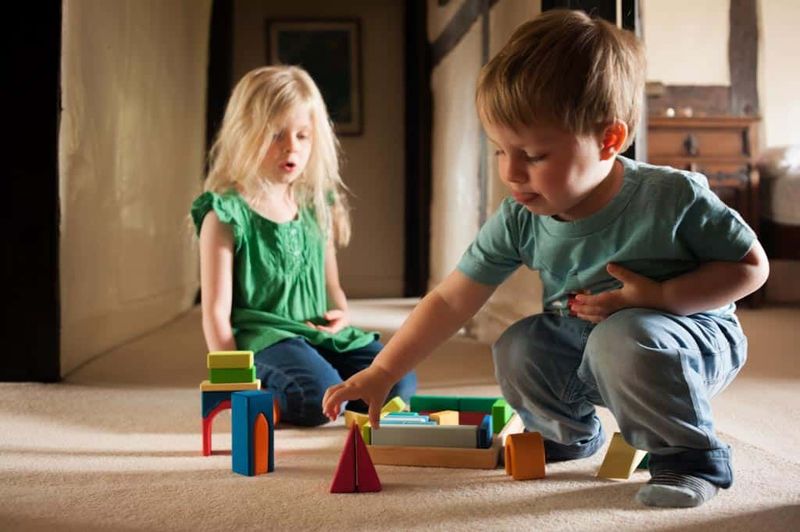11 Ways to Connect With a Child Who Pushes You Away

Parenting a child who keeps you at arm’s length can feel like navigating a maze blindfolded. The natural instinct to reach out meets resistance, leaving many parents confused and hurt. But behind this pushing away often lies a child’s deeper need for connection – just on different terms than you might expect.
1. Stay Emotionally Available

Children who push others away are often testing whether adults will stick around when things get tough. Your unwavering emotional presence builds the secure foundation they desperately need but can’t ask for directly.
Keep your emotional door open by using simple phrases like “I’m here whenever you’re ready” or simply sitting nearby without demands. Remember that your child watches your nonverbal cues even more closely than your words.
This consistent availability might feel one-sided for weeks or months, but it’s quietly registering in your child’s emotional bank account. Even when rejected, maintain the gentle message: “Nothing you do will make me stop caring about you.”
2. Use Gentle Persistence

The magic lies not in grand gestures but in small, consistent moments of showing up. A child who has learned to push others away expects abandonment – your gentle persistence proves this expectation wrong.
Bring a glass of water to their room without comment. Offer a favorite snack without requiring conversation. Text a funny meme or leave a note in their lunchbox. These small gestures bypass verbal resistance.
Think of persistence as planting tiny seeds of connection. Each seemingly insignificant interaction tells your child: “I notice you. I choose you. I’ll keep choosing you.” Over time, these seeds grow into the trust necessary for deeper connection.
3. Regulate Your Own Emotions First

A child’s rejection can trigger our deepest insecurities and childhood wounds. Before you can help your child regulate their emotions, you must first manage your own feelings of hurt, anger, or inadequacy.
Take deep breaths when you feel that flash of frustration. Step away briefly if necessary, saying “I need a moment to think.” Your calm presence provides a emotional safety net that helps your child’s nervous system reset.
Children are emotional sponges who absorb our internal states. When you remain centered during their emotional storms, you’re teaching more than any lecture could. Your regulated presence is the most powerful tool you have for helping a disconnected child.
4. Offer Non-Verbal Connection Opportunities

Words can feel threatening to a child who’s built emotional walls. Physical proximity without conversation often provides the safety they need to gradually lower their defenses.
Sit on the floor while they play nearby. Offer to drive them places – cars create a perfect side-by-side connection without the pressure of eye contact. Watch their favorite show together without discussion. These shared experiences build connection beneath conscious awareness.
The body speaks a language older than words. A warm drink delivered silently, a gentle touch on the shoulder as you pass by, or simply being in the same room without demands – these quiet moments often reach places that conversations cannot.
5. Validate Feelings Without Trying to Fix Them

When a child pushes you away, their emotions are already overwhelming them. Adding your solutions or corrections only increases their emotional load and reinforces disconnection.
Instead, become a mirror that accurately reflects what you observe: “You seem really frustrated right now” or “That situation sounds really disappointing.” This simple acknowledgment helps children feel seen rather than judged.
Resist the urge to immediately problem-solve or offer perspective. Validation isn’t agreement – it’s recognition that their feelings make sense from their perspective. This emotional acceptance creates the safety needed before any problem-solving can effectively happen.
6. Honor Their Need for Space

Sometimes the most connecting thing you can do is respect a child’s request for distance. Fighting against their boundaries only reinforces the walls they’ve built and proves their fears about relationships correct.
When they say “leave me alone,” respond with respect: “I understand you need space. I’ll check back in 20 minutes.” This honors their autonomy while still maintaining connection. The key is returning when promised – this builds trust in your reliability.
Children often push away hardest when they feel emotionally flooded. Giving space isn’t abandonment when done with love and clear communication about your return. This respectful distance teaches that in healthy relationships, people can have boundaries and still remain connected.
7. Create Meaningful Connection Rituals

Rituals create predictable moments of connection that bypass resistance through their familiar rhythm. For children who push others away, these dependable touchpoints provide security without demanding emotional vulnerability.
Keep rituals simple and consistent: a special handshake before school, a specific question at dinner (“What was one good thing today?”), or a nighttime routine that happens regardless of behavior. The beauty lies in their predictability and lack of emotional demands.
Even during periods of greatest disconnection, maintain these rituals without comment. They form invisible threads of connection when more direct approaches fail. Over time, these small moments of connection accumulate into a stronger relationship foundation.
8. Harness the Power of Side-by-Side Play

Play bypasses defenses by engaging the brain’s reward system rather than its threat detection system. For children who push away, side-by-side activities feel safer than face-to-face interaction.
Building with blocks, coloring together, shooting baskets, or playing video games creates connection without direct emotional demands. The focus on a shared activity reduces pressure while still creating positive associations with your presence.
Follow their lead without teaching or correcting during play time. This child-directed approach shows respect for their preferences and builds their sense of agency. When a child feels control within the relationship, they’re less likely to seek control through pushing you away.
9. Model Relationship Repair After Conflicts

Children who push others away often expect relationships to break permanently after conflict. Your willingness to repair connection teaches them that relationships can withstand disagreement.
When tensions rise, acknowledge your part: “I got frustrated and raised my voice. I’m sorry – that wasn’t helpful.” This vulnerability models emotional responsibility without burdening them with fixing your feelings.
The repair process matters more than perfect parenting. When you make mistakes (as all parents do), use them as opportunities to demonstrate that connection can be restored after rupture. This rebuilding of trust after difficult moments gradually convinces a resistant child that relationships can be both imperfect and secure.
10. Offer Limited Choices Instead of Commands

Children who push others away often feel powerless in their lives. Direct commands can trigger opposition, while thoughtfully structured choices build cooperation and respect.
Replace “Put on your shoes now” with “Would you like to wear your blue shoes or red ones?” Instead of “It’s time to talk,” try “Would you prefer to talk while walking the dog or while driving to the store?” These small choices create a sense of agency.
The key is offering legitimate options within necessary boundaries. This approach transforms potential power struggles into opportunities for collaboration. When children feel some control within the relationship, they’re less likely to seek control through rejection or resistance.
11. Look Beyond Behavior to Underlying Needs

A child’s pushing away behavior rarely means they want less connection – it usually signals they need connection delivered differently. Behind resistance often lies fear, past hurt, or unmet developmental needs.
Approach challenging behavior with curiosity rather than judgment: “I wonder what’s happening for them right now?” Consider whether sensory sensitivities, anxiety, past relationship disruptions, or developmental stages might explain the disconnection.
Sometimes professional support helps identify these underlying factors. A child therapist, developmental pediatrician, or family counselor can provide insights into the roots of resistance. Understanding the “why” behind pushing away behavior transforms frustration into compassion and points toward more effective connection strategies.

Comments
Loading…